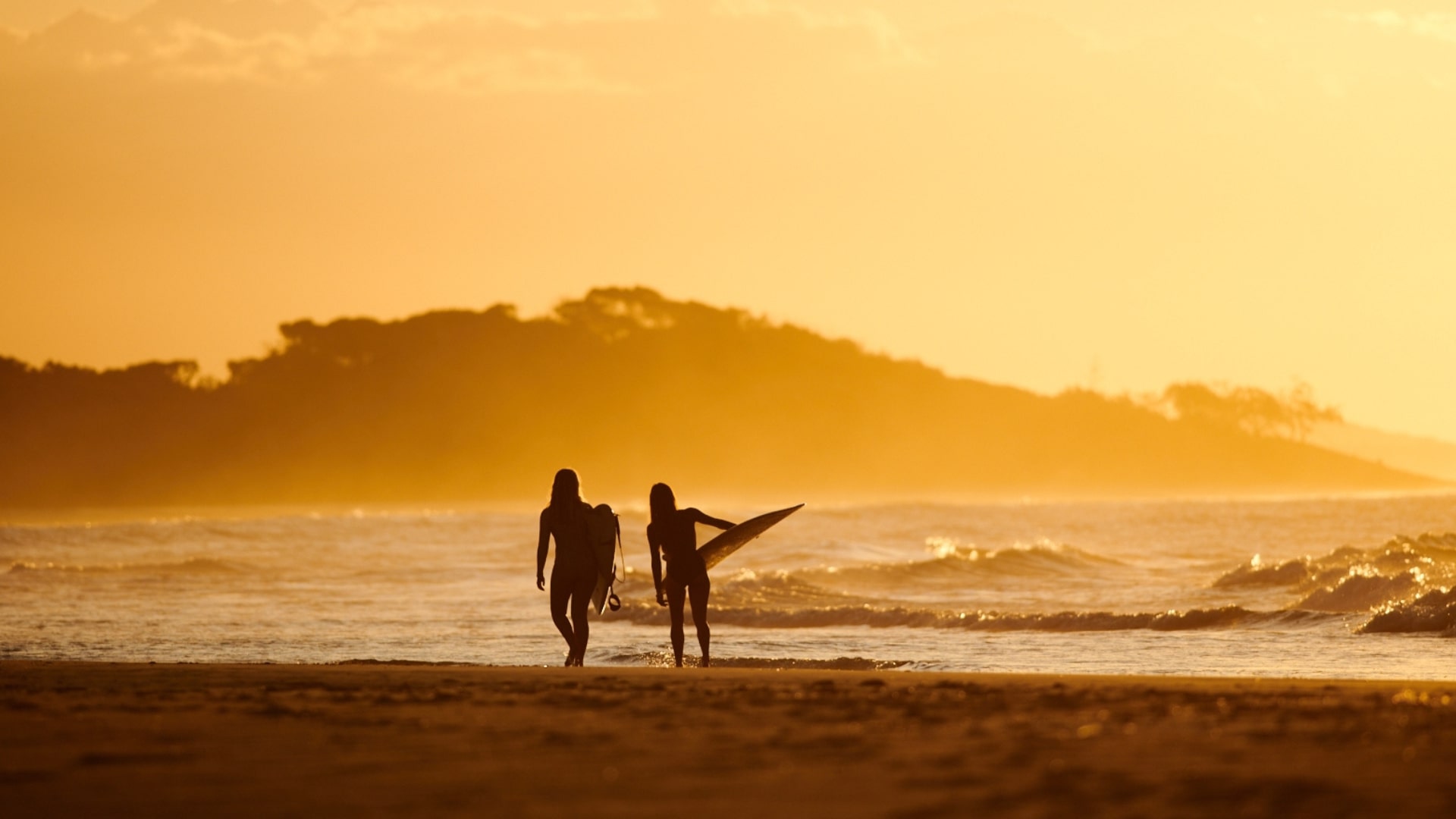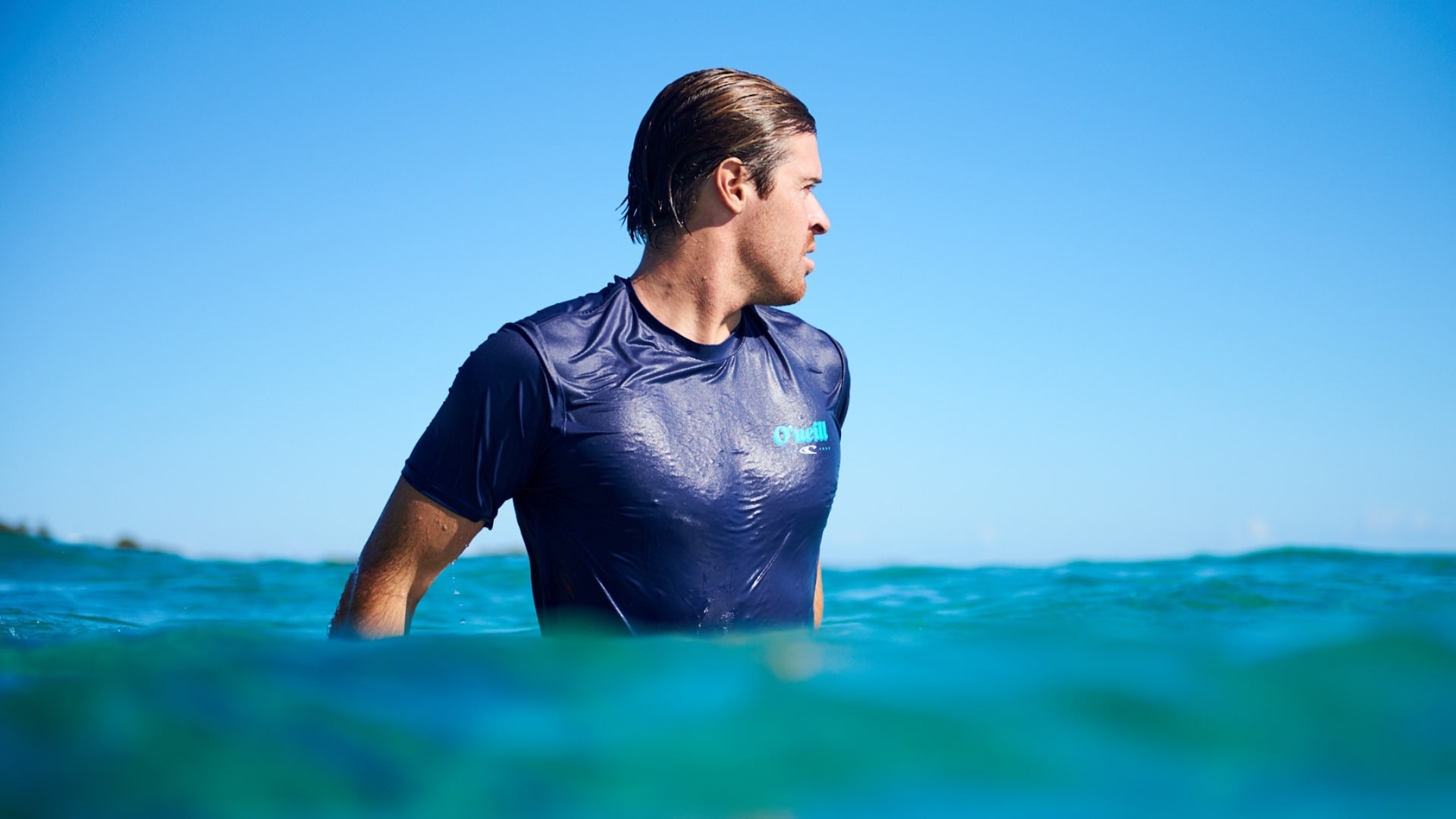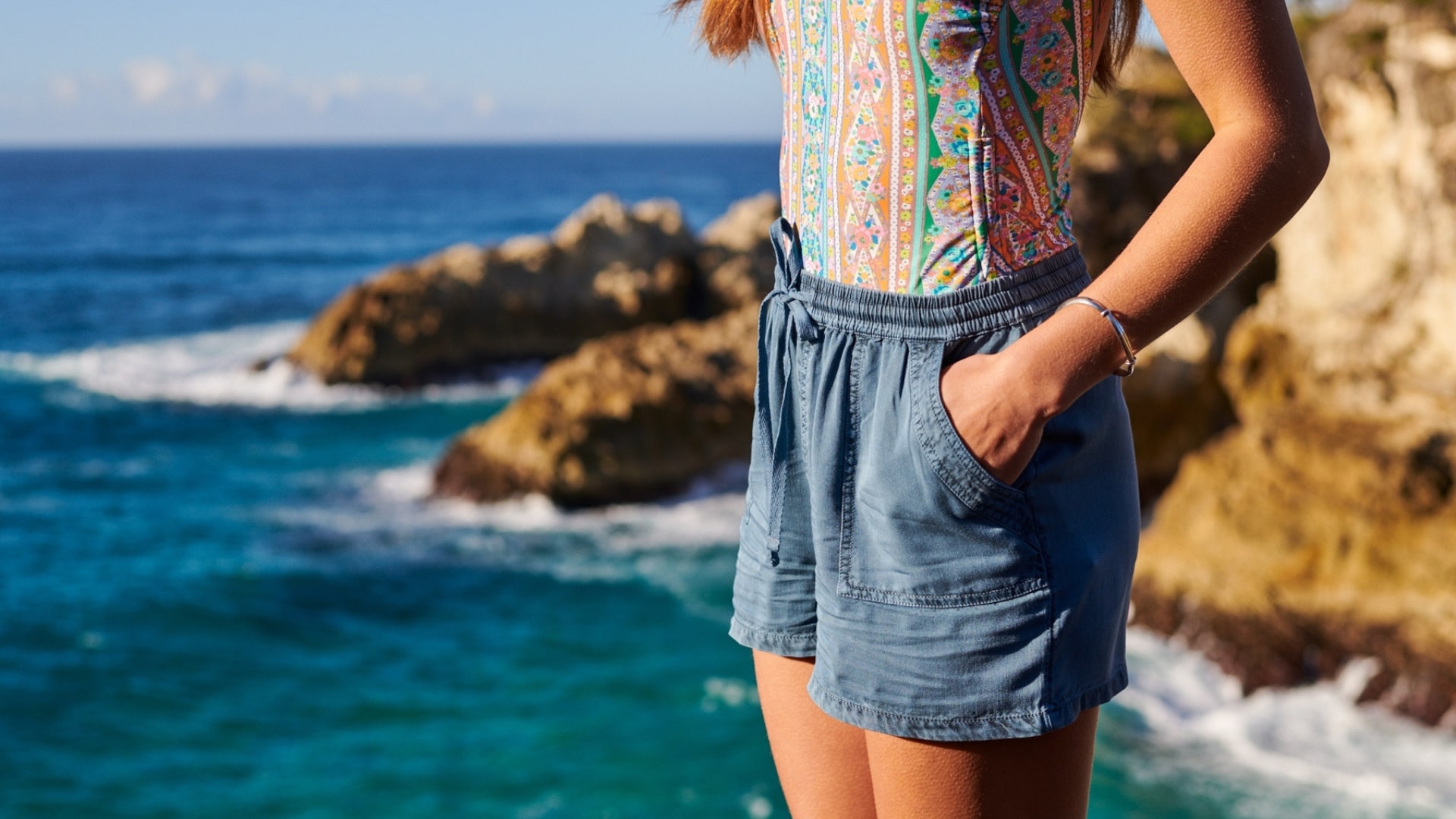| Your browser is not supported. | ||
|
Please browse our site using any of the following options:
| ||
How to choose swimming and water sports gear?
Australian summer is all about the swimming pool, the beach and water sports, but the sun burns skin frighteningly fast and can do permanent damage, so proper sun protection is essential. Whether you're swimming, snorkelling, surfing, bodyboarding, stand up paddleboarding, kayaking, canoeing, waterskiing, wakeboarding, jet skiing, sailing, windsurfing or just building sandcastles with the kids, you'll need to wear something made for the water, UV protection and comfort. This buying guide outlines the key things to consider when weighing up what to buy for yourself and your loved ones.
Quick Links
- Swim & Surfwear FAQs
- What's The Best Swimwear In Australia?
- Different Types Of Swim & Surfwear
- The Comfort Levels Of Swim & Surfwear
- Choosing The Right Size
- Essential Swimming Accessories
- The Quality Of Your Swim & Surfwear
- How To Wash Swimwear
Swim & Surfwear FAQs

What Are Board Shorts?
Board shorts, also known as boardies, are specifically designed for water sports such as surfing, wakeboarding and stand up paddle boarding so that they move with your body while also staying up on your waist and not restricting your movement.
What To Wear Surfing?
When going surfing, surfers typically tend to wear board shorts with either no top or a rashie in the summer and wetsuits when needing warmer swimwear in the winter months. They tend to also wear water shoes for better grip on the board and a strap so their board is always with them.
What To Wear To The Beach In Winter?
When it comes to what to wear to the beach in winter, a long-sleeve rashie or a wetsuit is going to be your best friend. A wetsuit is designed to trap in heat and insulate you while you are out in the water. You will also want to wear sunscreen and a hat.
What To Wear Kayaking?
When deciding on what to wear kayaking, the most crucial items you should wear are a PFD, thermal wear (for cold weather), lightweight footwear, bottoms like board shorts, proper gloves for better grip, footwear like water shoes, and an outer layer like a water-resistant jacket.
What Material Is Swimwear Made Of?
When it comes to what material is swimwear made of, the most common materials in swimwear you will find are typically nylon, polyamide, polyester and neoprene. These materials are not only great for insulation during colder weather but are also blended with elastane to not restrict movement when in the water.
What Do You Wear Under Boardshorts?
It completely depends on you and your style. Many surfers will go commando and not wear anything underneath their boardshorts, while others prefer swim briefs to help reduce chafing as they move in the water.
How To Style Boardshorts?
When styling your boardshorts, remember to choose the right colour, for example, darker colours go better with lighter skin tone colours and vice versa. Also consider their functionality, such as do your board shorts need pockets?
What's The Best Swimwear In Australia?

We all want to do different things on the water and we're all different shapes and sizes, so what's best for someone might not suit someone else. The best swimwear in Australia to wear in the water depends on:
- Who'll be using it (kids or adults? How big are they?)
- Where you'll be hitting the water (in warm or cold water/weather?)
- What you'll be doing (swimming, surfing, skiing, boarding, sailing or paddling?)
- How often you'll be in the water and for how long (rarely or every week for years?)
- How long you want the gear to last (a few summer days or for many years?)
Different Types Of Swim & Surfwear
Here is a breakdown of the most common types of swimwear and surfwear you can expect to wear when enjoying the water.
Swimsuits
Swimsuits, also known as swimmers, bathers, cozzies and togs, are some of the most common types of swimwear. Some swimwear is made with chlorine-resistance technology so it won't fade as fast and lasts longer and has stretch technology for softness so it's comfortable to wear and swim in. For women and girls, a swimsuit is a one-piece with long sleeves for extra sun protection. Swimsuits can be worn underneath a wetsuit, board shorts or a rash vest for extra comfort.
Boardshorts
Boardshorts, also known as boardies, are usually made from quick-drying material so they dry fast when you're out of the water and can be worn from the water to wherever you want to get something to eat or drink. Boardshorts can be made with fade-resistance technology so the colours stay bright for longer and they usually have pockets for your wallet, phone and keys (just don't take them in the water!) Boardshorts have an elasticised waistband (with or without a cord) or a velcro fly with a tie at the top and can have moisture-wicking technology to keep you dry in hot weather when you sweat, whereas boardshorts made from cotton are more breathable than nylon boardies (but cotton won't dry as fast).
Rash Vests
Also known as rashies, rash vests protect your upper body from the hot sun (but won't always keep you warm in the cold). They can have long sleeves or short sleeves, but long sleeve rashies will protect your arms, body and neck. Rashies have a UPF rating (like sunscreen), and a UPF50+ rating will give\ you the best sun protection. They are lighter than a T-shirt when wet and are moisture-wicking so you will stay dry when you sweat. Rashies are more breathable than a wetsuit (but not as warm), so they are better for warmer weather as well as watersports like stand up paddle boarding, surfing, bodyboarding and kayaking. Some rashies are made with chlorine-resistance technology so they won't fade as fast/last longer and are made from environmentally-friendly recycled water bottles.
Wetsuit
Also known as a steamer suit or spring suit, a wetsuit will keep you warm while surfing or bodyboarding so you can stay in the water for hours. They are made from neoprene (a hardy synthetic rubber) that can handle sharp coral and rocks. A steamer suit (also known as a steamer) has long sleeves and long legs to keep you warm in winter or cold water (or if you're a colder person) and protects your arms and legs from the sun, stingers and cuts. A spring suit (also known as springy) has short sleeves and shorts so your core stays warm but your arms and legs are free (so you don't overheat). It’s best for summer or warmer water (you'll need sunscreen on your arms and legs) and is easier to put on/take off than a long wetsuit (but still hard to put on when wet).
The Comfort Levels Of Swim & Surfwear
How comfortable you feel will depend on how warm you are and how much you can move.
Warmth
When it comes to staying warm, some materials keep you warmer than others (better insulation). It’s crucial to understand that warmth is more important in colder weather and water because getting wet leads to feeling cold, so wetter means colder - and the wind can also make you feel cold when you're paddling.
Movement
How thick or thin the material of the swimwear you're wearing impacts your ability to move. Thinner materials give you more freedom to move (but don't keep you as warm), whereas thicker materials keep you warmer (but restrict your movement). It’s also important to understand that what you're wearing determines how freely you can move (and how warm you'll be). When paddling, you need to be able to reach forward, and although you're not in the water, if you get wet (from paddle splashes or falling in) then warmth matters more. When surfing, you need to be able to lay on the board and paddle with your arms - warmth is more important when you're surfing for longer or surfing in cold water/weather. With other water sports, weigh up how much you need to move against how long you'll be in the water for and how cold the water and weather will be.
Materials
The material you wear needs to suit the weather and the type of activity you're doing. Here is a breakdown of the most common materials:
- Lycra: Stretchy swim/surf/paddling rashies for sun protection in warm water/weather.
- Poly-fleece: Paddling rashies with fleece lining on the inside for warmth in cool weather.
- Neoprene: Wetsuits for the warmest possible insulation in cold surf and cold weather.
- Nylon/polyester: Loose-fitting, water-repelling kayaking/canoeing tops, shorts and pants.
Choosing The Right Size

Choosing the right size of swimwear involves knowing your measurements and understanding the specific sizing guidelines of the brand you are interested in. To get the most accurate measurement, make sure to measure your bust, waist and hips accurately, and then compare these measurements to the size chart provided by the swimwear brand or website. Additionally, consider the style and fit that you prefer because some swimsuits may run small or large depending on the design. If you're unsure, trying on multiple sizes in-store can be a good strategy.
Essential Swimming Accessories
You can also enhance your comfort, safety and fun in the water with these essential swimming accessories.
Goggles
Goggles are designed to provide ideal underwater visibility while swimming and other watersports such as jet skiing and wakeboarding. When choosing swimming goggles, remember that silicone straps will last longer than rubber straps and that neoprene straps are the best if you are doing watersports like jet skiing.
Water Shoes
Water shoes are designed to protect your feet from rocks, coral and cuts (which can cause nasty infections) when doing watersports such as swimming, snorkelling, kayaking and jetskiing (protection, grip and warmth). They provide your feet with extra grip on wet surfaces like rocks and jetskis so you don't slip over. Water shoes are made from neoprene (wetsuit material) with a non-slip rubber sole. You can easily wash water shoes with wetsuit soap in cold or warm water, but remember to not dry them in direct sunlight.
Hat, Sunscreen & Sunnies
A quick-drying hat with UVA and UVB protection will keep your face shaded from the harsh Aussie sun, and an SPF50+ sun hat or legionnaires cap is excellent for protecting kids when on the beach and in the water. A pair of UV-rated sunglasses will minimise the glare from the sun reflecting off the water - and make sure they have a neoprene strap to keep your sunglasses attached so you don't lose them in the water. You will also need plenty of sunscreen that's at least SPF 30+ and always apply at least 20 mins before sun exposure. Remember to reapply your sunscreen every two hours to make sure you and your loved ones are protected.
Thongs
When it comes to some of the different types of comfortable thongs and sandals, Havaianas thongs and Crocs are a global hit, and Teva sandals are popular too. You can buy Havaianas thongs and Teva sandals in-store and online from Anaconda. We also have a wide selection of different colours for kids, men and women to choose from such as black, blue, brown, green, grey, multicoloured, natural, orange, pink, purple, red, white and yellow.
What swimming pool accessories are available for kids?
Anaconda has lots of swimming pool accessories for kids such as:
- Floaties/armbands: To help them stay afloat and practice swimming (always supervise).
- Floatsuits: With a foam waist so their arms are free to practice swimming (supervised).
- Fun floats: Different animals and shapes kids can play and paddle on (supervised).
- Snorkels: So kids can swim in the pool and the ocean for hours of free fun (supervised).
Are there any swimming pool accessories that can help you learn to swim?
There sure are! At Anaconda, we have heaps of ranges such as personal flotation devices to help you stay afloat while you practice swimming, floaties that you inflate and put on your arms so you float in the water while learning, kickboards that you can hold onto with your hands while you practice swimming leg kicks and much more!
The Quality Of Your Swim & Surfwear
When you're weighing up which swim and surfwear to buy, think about quality versus cost. For example, rubber goggles and snorkel masks are the cheapest - but won't last as long as silicone. Thin wetsuits are cheaper than thick wetsuits - but they don't keep you as warm. A wetsuit with sealed seams is more expensive (because it will keep you warmer). When it comes to how much you should spend on water wear and accessories for kids, go for swimming gear that has the highest sun protection rating, which is UPF50+. Cheap swimming gear may not last as long as pricier gear - but you get what you pay for. Whatever you spend is an investment in skin protection, warmth and comfort, so if you'll be spending lots of time at the beach or in the water, it might be worth spending a bit more on good-quality gear.
How To Wash Swimwear

In order to effectively wash your swimwear, simply follow these simply steps.
Rinse The Swimsuit
It is best practice to rinse out your swimsuit under cool water as soon as possible each time you visit the beach, ideally letting it soak for around 30 minutes. This is because soaking it in cool water will get rid of most of the body oil, salt, sand and chemicals that can damage the fabric of the swimsuit.
Wash The Swimsuit
Because just plain water will not effectively remove all of the stains that you will want to get rid of, you will need to also fill a sink with cool water and add in about one teaspoon of gentle laundry detergent in liquid form. If you don’t have any, then dishwashing liquid is a good alternative.
Treat The Stains
Now start scrubbing the swimsuit to remove any excess stains. You do not need to go too hard, just give it a little massage. Then turn it inside out and leave the swimsuit to soak in the solution. Give a few swishes for about 20 minutes and then rinse it well under cool water. Continue to squeeze it until most of the water has come out of the fabric.
Dry The Swimsuit
Once you have washed and rinsed out your swimsuit, the last step is to dry it out completely. To do this, simply spread it out flat to dry in an area that is not in direct sunlight, otherwise the UV rays will damage the fabric and fade out the colours.
Find The Best Swimwear In Australia At Anaconda Today!
Make sure your day out at the beach goes according to plan with these swimwear essentials you shouldn’t leave without. Before you head out though, make sure you check out our Adventure Centre for more helpful tips and exciting destinations that you can visit with your friends, family and loved ones such as:
- The Benefits Of Being Outside In Nature
- How To Plan The Perfect Day At The Beach
- Australia's Best Kayaking Locations
- How To Get Into Stand Up Paddle Boarding
Find your local Anaconda store and check out our extensive range of water sports for your next outdoor adventure